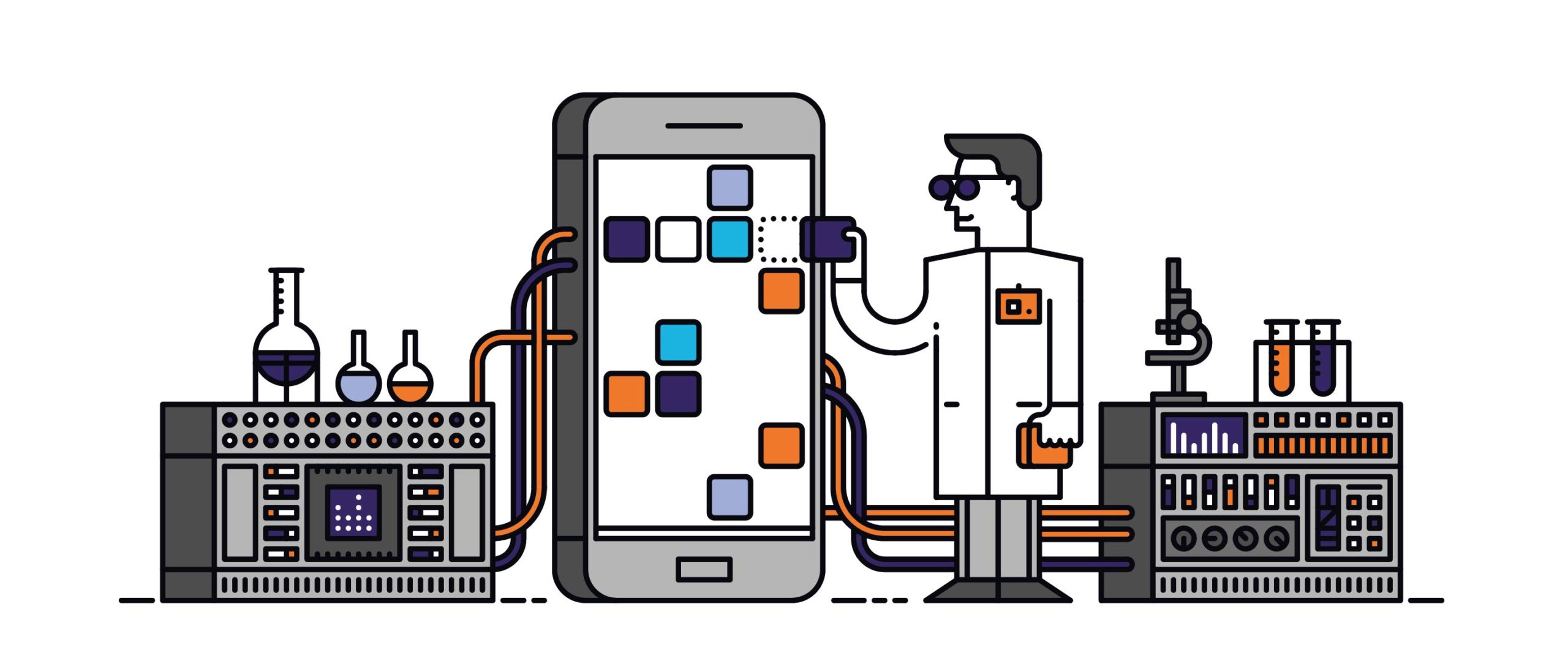
Smart labs are defined by their ability to interconnect every facet of workflow, inventory, and data analysis. The four corners of a smart lab are data management, inventory management, the internet of things (IoT), and automation. So, what do labels have to do with smart labs? These systems all depend on data accuracy and consistency, which is accomplished at the front end when samples and reagents are scanned as they’re processed. Below, we’ll review some of the newer smart label features that have helped spur smart lab innovation.
Inventory management
Cryogenic labels are the primary driver of accurate inventory management systems. These labels are designed for extended storage in liquid nitrogen and ultra-low temperature freezers. Given that the majority of any lab’s inventory resides in these storage environments, these labels act to accurately preserve all information contained therein.
Certain cryogenic labels have improved inventory management capabilities, like CryoSTUCK® labels. These labels can be affixed to frozen tubes (kept at -80°C), which means that samples do not have to be thawed to be re-labeled. This is especially crucial for managing cell lines and tissue stocks, which can lose integrity when thawed. These labels effectively maintain the consistency of your frozen inventory by reducing thawing damage over time.
IoT
Radio-frequency identification (RFID) uses encodable chips that make it possible to scan multiple samples simultaneously without a direct line-of-sight. IoT is classically defined as an ecosystem of technologies that monitor items, integrate data, and communicate information through IP networks to software applications. As such, RFID is at the forefront of IoT technology, allowing samples and inventory to be continually monitored and data to be relayed instantly, helping to interconnect all systems together.
RFID has never been as prominent in the lab as it is now. New RFID technology allows almost any label to be designed with an inlay for an RFID chip, which can be adapted to many more lab environments, including cryogenic storage, exposure to harsh solvents, and high-heat sterilization. This means that the entire contents of the lab, from samples and inventory to equipment and sign-in badges, can now be interconnected into a straightforward, easy-to-use management system.
Automation
Automation in the lab has focused mainly on high-throughput techniques, like mass spectrometry, microarrays, and drug screening. To make these techniques more efficient, labeling has also kept up, with automated labelers that can be used to perform sample identification functions, like printing, affixing, and scanning barcode labels, in addition to tube sorting, liquid dispensing, as well as uncapping and recapping. It’s worth noting that these functions are found on a select few types of automated labeling systems, including Scinomix’s Sci-Print VX2 and VXL models.
Data management
Data management is usually accomplished on the back end, with results accounted for and accessed by a laboratory information management system (LIMS). Though its analysis occurs within the LIMS, the inflow and outflow of data happens via label scanning and printing, respectively. Therefore, effective data management depends on the integration of the LIMS in two areas:
- Accurate data collection from samples: Labels designed to resist chemical exposure, cryogenic freezing, and high heat means that samples remain well-identified as they’re processed. Many different label features are available to aid in this process, such as specialized systems for PCR and qPCR tubes, as well as piggyback, blackout, and wrap-around capabilities.
- Label printing software that integrates seamlessly with the LIMS: Once experimentation is required to be performed, samples and all tubes associated with their processing require new labels. Specialized software has been developed to generate these labels, such as Seagull’s BarTender, which makes it possible to automatically relay information from a LIMS database directly into the program, create barcodes, and print labels accordingly.
From what started as entirely paper-based labs, many are transitioning to paperless systems that integrate all facets of workflow and inventory into adaptable, smart labs. Sample identification is at the interface between all these new systems, which depends on specialized labels to be accurate and reliable. However, integrating sample identification relies not just on labels but printing and software as well; therefore, we recommend partnering with someone who can help manage every aspect of sample identification to provide a tailored solution that works to realize the full capabilities of your smart lab.
LabTAG by GA International is a leading manufacturer of high-performance specialty labels and a supplier of identification solutions used in research and medical labs as well as healthcare institutions.